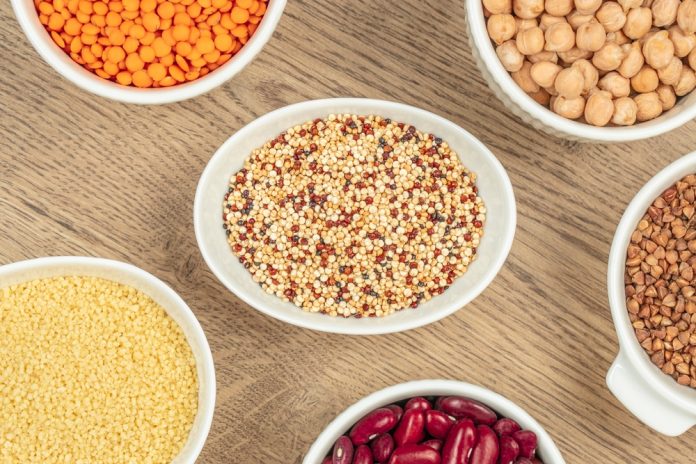When it comes to healthy eating, many people are turning to alternative grains to replace traditional staples like rice. Two popular options are quinoa and couscous, both of which offer a tasty and versatile alternative. While these two grains may seem similar, there are actually some key differences in terms of nutrition and taste. In this article, we will explore the nutritional benefits and key differences between quinoa and couscous, helping you to make an informed decision about which grain is right for you.
Before we dive into the specifics, let’s first understand what quinoa and couscous are. Quinoa is a grain that originated in South America and has been cultivated for thousands of years. It comes in three main varieties: white, red, and black. On the other hand, couscous is a type of pasta made from semolina flour, which is then rolled into small pellets. It has been a staple in North African and Middle Eastern cuisine for centuries.
One of the main differences between quinoa and couscous is their nutritional composition. Quinoa is often hailed as a superfood, and for good reason. It is a complete protein, meaning it contains all nine essential amino acids that our bodies cannot produce on their own. This makes it a great option for vegetarians and vegans, as well as anyone looking to increase their protein intake. In fact, one cup of cooked quinoa contains 8 grams of protein, compared to only 3 grams in one cup of cooked couscous.
Furthermore, quinoa is a good source of fibre, with one cup containing 5 grams. Fibre is essential for maintaining a healthy digestive system and can also help to keep you feeling full and satisfied after a meal. On the other hand, couscous only contains 2 grams of fibre per cup. This may not seem like a significant difference, but over time, it can add up and contribute to a more balanced and healthy diet.
Another key difference between quinoa and couscous is their mineral content. Quinoa is rich in magnesium, which plays a crucial role in many bodily functions such as regulating blood pressure and maintaining healthy bones. In fact, one cup of cooked quinoa contains 30% of the recommended daily intake of magnesium. In comparison, couscous only contains 2% of the recommended daily intake. Quinoa also contains other minerals such as iron, phosphorus, and zinc, making it a nutrient-dense option.
However, couscous does have its own unique nutritional benefits. It is a good source of selenium, which is a mineral that acts as an antioxidant and helps to protect our cells from damage. It also contains small amounts of calcium and potassium, which are essential for maintaining healthy bones and muscles. While couscous may not be as nutrient-dense as quinoa, it still offers some health benefits and can be a good addition to a balanced diet.
Aside from their nutritional differences, quinoa and couscous also have distinct textures and flavours. Quinoa has a slightly nutty taste and a chewy texture, making it a great addition to salads, soups, and stir-fries. It can also be cooked with herbs and spices to add more flavour. On the other hand, couscous has a milder taste and a soft, fluffy texture. It is often used as a base for stews and tagines, or as a side dish for meat and vegetable dishes.
When it comes to cooking, quinoa and couscous also have different preparation methods. Quinoa needs to be rinsed before cooking to remove any bitterness, and it is typically cooked in a ratio of 2 parts water to 1 part quinoa. It is also important to keep an eye on the cooking time, as overcooking can lead to a mushy texture. On the other hand, couscous is much quicker and easier to prepare. It only requires boiling water to be poured over it, and then it is left covered to absorb the water. Unlike quinoa, it does not need to be rinsed beforehand.
In terms of cost, couscous is generally cheaper than quinoa. This is because quinoa is more difficult to cultivate and requires more resources to produce, resulting in a higher price point. However, the nutritional benefits of quinoa may outweigh the cost for many individuals.
In conclusion, while quinoa and couscous may seem similar at first glance, there are actually several key differences in terms of nutrition, taste, and preparation. Quinoa offers a higher protein and fibre content, as well as a variety of essential minerals. However, couscous is still a nutritious option and can be a good alternative for those on a budget. Ultimately, the choice between quinoa and couscous will depend on your personal dietary needs and preferences. Consider incorporating both into your meals to reap the unique benefits of each grain.








